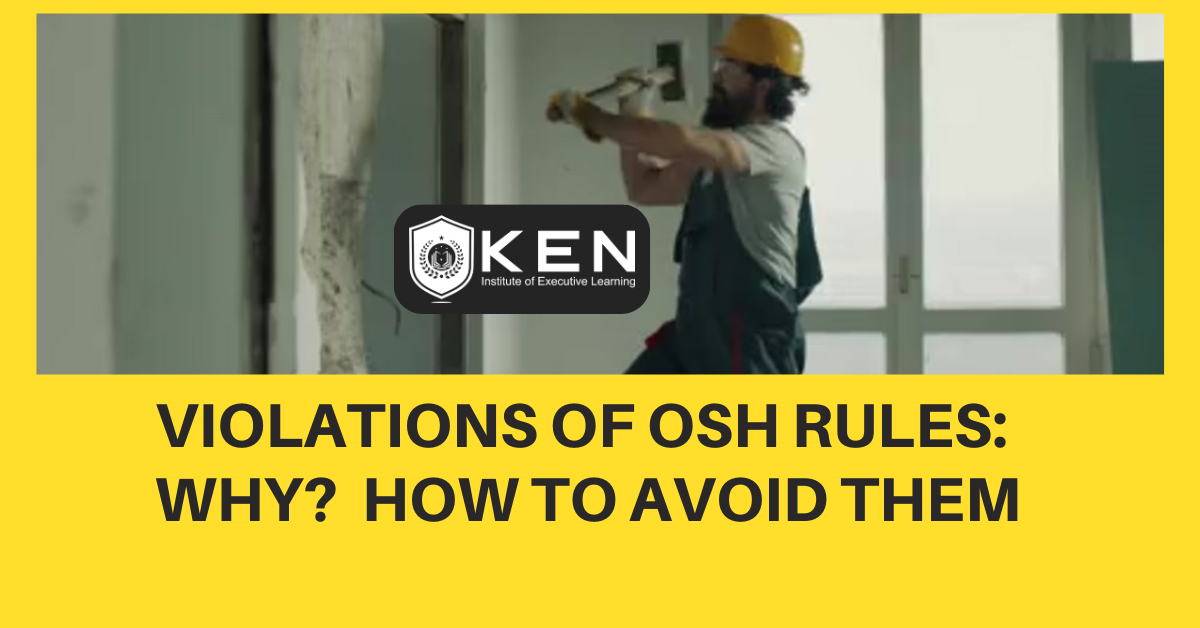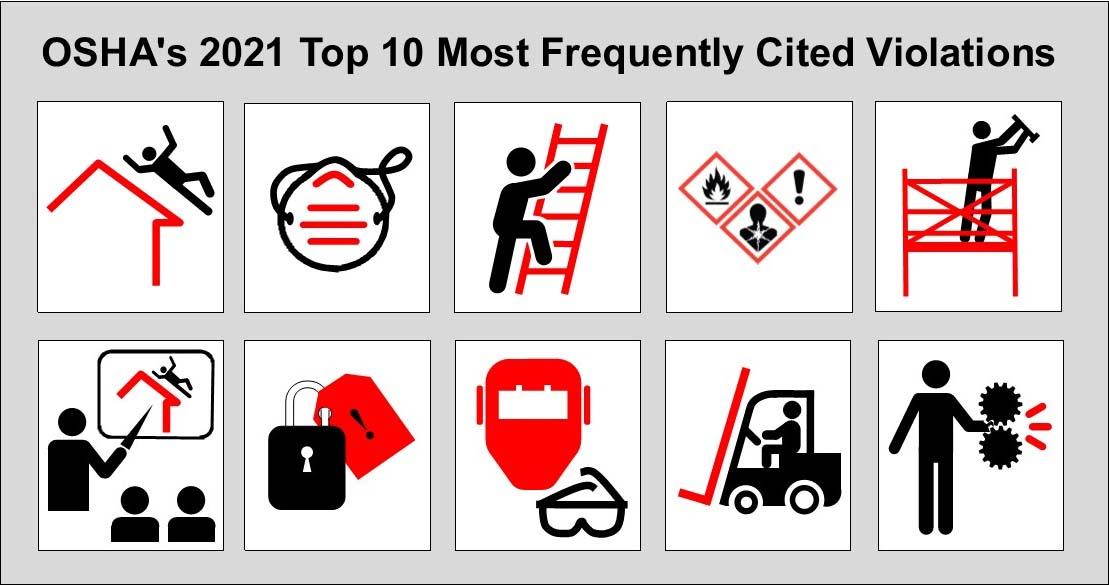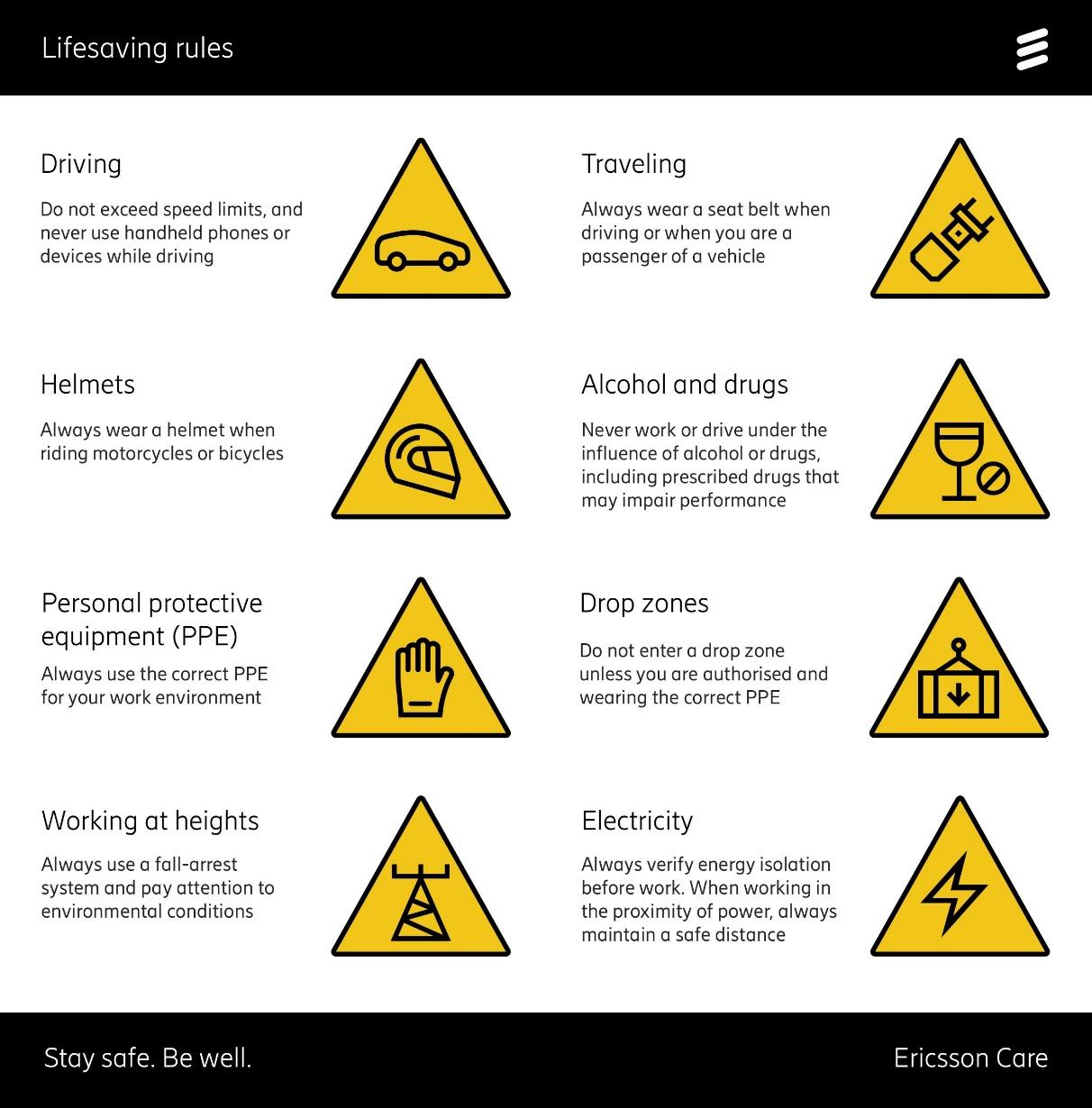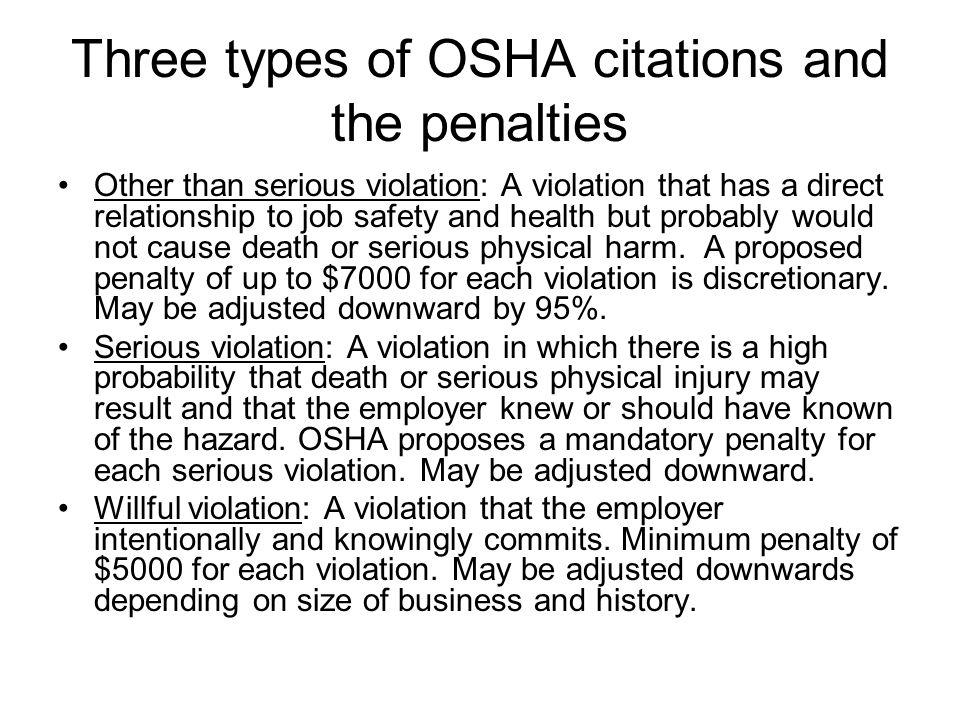
Rule and procedures violation occurs when organisationally, professionally, or legally defined rules are not followed by employers and employees. To understand rule violations, we have to understand human error and human performance in general. It is widely accepted that human error plays a part in most safety accidents and incidents. ‘Violations of OSH rules’ is a specific form of human error.
Root Cause of Violation of OSH Rules
The Lethal Cocktail: Behavioural Cause Model
The four main contributing factors to violation:
- The expectation that rules have to be broken
- Powerfulness of competence to work around procedures
- Existence of the opportunity to violate
- Inadequate work planning.
While observing the underlying causes for violations it is observed that merely reiterating a rule will influence the frequency of many violations. For example, when violations are necessary to compensate for poor equipment or when management turns a blind eye to violations.
The root cause of the violation is therefore attributed to a poor OSH culture.

Strategies to Mitigate the Negative Consequences of Violations of OSH Rules
Top-Down Approach and A Bottom-Up Approach
When companies take a top-down approach all violations are unacceptable. The idea is that if all employees work according to the rules, risks will be mitigated. Also meant to describe and regulate undesired behaviors of employees.
In companies, in which a bottom-up approach is followed, experience and expertise are considered most relevant for which informal ‘procedures’ to follow.
In practice, a combination of approaches will be present in most companies.

Unintentional Violations
Unintentional violations occur:
- when rules are written, “in an attempt to control behavior that is impossible to control”
- when employees do not know or understand the rules that they are expected to follow.
Unintentional violations are very likely to require different remedial actions than those appropriate for intentional violations.
Routine violations
Routine violations occur when the normal most common ways of working are different from prescribed rules and procedures. These are generally accompanied by a risk assessment sanctioned by leadership. This may be also due to a lack of supervision and training, allowing the situation to persist.
Routine violations can be minimized by assessing risk, reducing risk-taking, increasing the probability of detection, and reducing the number of unnecessary rules
Situational violations
Situational violations occur when circumstances in the workplace (such as time pressure, and equipment availability) require or entice employees to violate specific rules.
Situational violations can be minimized by improved job design, planning, hazard reporting system, working conditions, positive health and safety climate, and appropriate supervision
Exceptional violations
Exceptional violations occur in unusual circumstances for example in crisis situations and might in those cases even be inevitable and necessary to cope with the exceptional circumstances.
Exceptional violations can be minimized by increased training for unusual situations, reducing pressure, time pressure, and putting defenses in place
Optimizing violations/lack of discipline
Optimizing violations of OSH rules occur when employees are tempted to cut corners and finish work early, seemingly acting in their interest.
Optimizing violations can be reduced by job redesign and examination of restrictive rules.
Removing the causes of violations would be more effective than removing the violators. To reduce violations the focus is therefore on different types of violations rather than different types of violators.

Approaches To Reduce Violations
Two main approaches to reduce violations of OSH rules are:
The Individual and Organisational Approaches
- Individual approaches are focused more on individuals that violate rules and generally include behavioral-based safety and/or leadership programs. An attempt is made to influence individuals and for example, train them to reduce violations. The social and organizational context is usually part, but not the main focus of change.
- Organizational approaches are focused more on circumstances and organizational factors that contribute to or reduce the occurrence of violations. The objective is to reduce violations by rule management. A proposed framework to improve rule management within organizations:
- Monitor the use of existing rules
- Evaluate the rules for their effectiveness
- Enforce the use of good rules
- Execute rules and deal with exceptions
- Redesign or scrap ineffective rules
- Define the rule for new processes or existing process
- Define the processes, risk scenarios, and controls
- Decide which controls need rules to be developed
- Define the use of the needed rules
- Develop and write appropriate rules
- Test and approve rules and store them in organizational memory
- Communicate and train in rule use and adaptation
From the available studies, it is clear that the causes of violations are multifactorial and complex. Therefore, for all types of violations a combination of individual and organizational approaches is recommended.
Top Ten OSH Safety Rules and Procedures Violations
Many preventable injuries and deaths occur on the job each year involving an estimated 2.8 billion workers. This is why The National Safety Council and the Occupational Safety and Health Administration (OSHA) release a ‘Top 10 Most Frequently Cited Workplace Safety Violation List’ each fiscal year, most of the time, ranking Fall Protection at the top!

- Fall protection- These rules include specific safety guidelines for different situations, fall protection equipment, and proper training for employees.
- Hazard communication- Working with hazardous chemicals requires employer communication and training about these dangerous chemicals with workers so they stay safe.
- Scaffolding- These rules include safety measures in the design of scaffolding and access to the scaffold for anyone working on or near scaffolding 10 feet or higher from the ground.
- Respiratory protection- Workplaces with air quality issues must abide by these worksite-specific procedures, proper respirator protection, and employee training in respirator use.
- Powered industrial trucks- These rules are for employees operating industrial trucks and other machinery including the design, operation, and maintenance and employee training for the safe use of them.
- Lockout and tagout- These regulations include the use of safety products to avoid the accidental start-up of machinery and the control of hazardous energy during the servicing and maintenance of trucks and equipment.
- Ladders- These are basic safety requirements that include selecting the correct ladder length and duty rating for the job it is to be used for.
- Electrical wiring- The safe use of electrical wiring includes the grounding of wiring, electrical equipment, and insulation and the use of proper tools and safety equipment.
- Machine guarding- These rules are for the installation of guarding around machinery and guarding requirements to protect employees from rotating parts, flying chips, sparks, and other dangers.
- Electrical- Safety requirements and safety measures to prevent workplace accidents while designing, installing, and using electrical systems, utilizing insulated hand tools, and ground fault circuit interrupters.
If employers would implement OSHA’s safety measures in these 10 areas, many workplace accidents and employee injuries could be eliminated.
How To Eliminate the Violations Of OSH Rules In The Workplace
Safety Tips:
1. Fall protection
Measure workspace elevations to identify potential fall hazards.
If a workspace is elevated 6’ or more from the level below it, make sure guardrails, safety nets or fall arrest systems are in place.
Install toeboards or screens around the base of an elevated area to prevent tools, equipment, and material from falling and hitting a worker below.
2. Respiratory protection
Inhaling air contaminated by dust, soot, gas, and vapor–which are all common on job sites can lead to a number of chronic respiratory problems and diseases.
Personal respiratory devices should form a complete seal on the face. Make sure facial hair is trimmed to allow for a respirator to fit properly.
3. Ladders
Most of the deaths in the construction industry are caused by falls from ladders. Falls that lead to serious injury and possibly death can result from ladders that are set up on an unstable, slippery surface or are carrying more than their maximum weight capacity.
Make ladder use a two-person job when possible. Designate one worker to be the spotter to ensure ladder stability. Never attach two ladders together to add extra length unless the ladders were specifically designed to do so.

4. Hazard communication
Conditions and materials used on the job site can create some potential safety threats. Many of the dangers can be avoided through the use of hazard communication.
Develop and implement a hazard communication plan. Assess any potential hazards an employee could be exposed to and communicate the risks using safety markers.
5. Scaffolding
Scaffolding and staging is a major cause of fatal falls in the construction industry. Scaffolding used on job sites must be designed by certified professionals, and employers are required to train their crew to identify scaffolding hazards.
Overloading a scaffold with material and equipment that exceeds the intended weight load can cause the structure to break and fall. Scaffold surfaces that are wet or slippery also pose a threat to worker safety.
Make sure there is enough clearance between the top of the scaffold and any ceiling fixtures, beams or exposed power lines to avoid accidental contact, and wear hard hats when working on scaffolding.
6. Fall protection training
Employers should train all workers, on the proper procedures to minimize the risks of falling. They must be trained to identify fall hazards and decide what steps to take to prevent falls proactively.
7. Lockout/tagout
The accidental start-up of a machine creates the potential for exposure to electrical hazards, gas, steam, and moving parts at the point of operation. A lockout or tagout device, such as an approved padlock or a combination lock, prevents machine startup by physically blocking the engagement of the required components for the machine to function.
Educate your workers about the importance of using lockout/tagout devices. Be mindful of workers who speak other languages and ensure the information is communicated to them as well.
8. Eye and face protection
About 2,000 workers suffer eye injuries on the job on average every day. Failure to wear eye and face protection is the leading cause of occupational eye injuries that may result in permanent blindness.
Employers have to provide personal protective equipment, for the eyes and face when employees are working around flying particles, chemicals and gases, and light radiation from welding.
PPE for the eyes must fit properly to be effective.
Installing an eyewash station on the job site can help provide fast relief from accidental chemical exposure to the eye before going to the emergency room.
9. Powered industrial trucks
Forklifts, pallet jacks, motorized hand trucks, and other similar vehicles require care when operating to prevent injury to the driver and other workers in the driver’s vicinity. It’s important to only allow certified and trained members of your crew to operate forklifts.
Forklift maintenance also plays a role in preventing injury. Have your forklifts serviced according to manufacturer specifications by qualified mechanics.
10. Machine Guarding
Moving machine parts without a safety guard in place at the point of operation poses a threat to workers from exposure to moving parts, flying pieces, and sparks. Amputations, crushing, maiming, and lacerations are some potential hazards when using a machine without proper safety guards in place.
Anchor all fixed machines to a sturdy mounting surface. Inspect tools regularly for signs of deterioration that may cause them to malfunction.
Workers’ Compensation Insurance
- All employers with one or more employees are required by law to carry Workers’ Compensation insurance or be qualified as self-insured.
- If not, an employer can be fined fiscally for each person they employ.
- If you were hurt because your employer intentionally violated safety regulations, you can be entitled to monetary benefits.

- If you believe a violation of a safety regulation occurred, you should file a complaint with the Division of Compliance for the enforcement of Occupational Safety and Health Standards.
- Occupational diseases contracted due to products, processes, and chemicals in the workplace are typical Workers’ Compensation claims.
- Consulting with an experienced work injury attorney about your specific situation will not harm your case but instead, provide the best outcome for your claim.
- It may also help prevent other workers from being injured in similar worksite scenarios.
Beyond the top 10 OSHA safety violations, there are many other workplaces people contend with every day. Help keep yourself and your team safe just by keeping an eye open for safety violations.
“Join Ken Institute for comprehensive Health and Safety courses led by expert faculty, ensuring your readiness to tackle workplace fire emergencies effectively.”
Get in touch with us at: info@keneducation.in
Visit our website: www.keneducation.in
Call us on +917569034271
Let’s connect on Facebook, YouTube, LinkedIn, and Instagram.
Tag: Health & Safety

